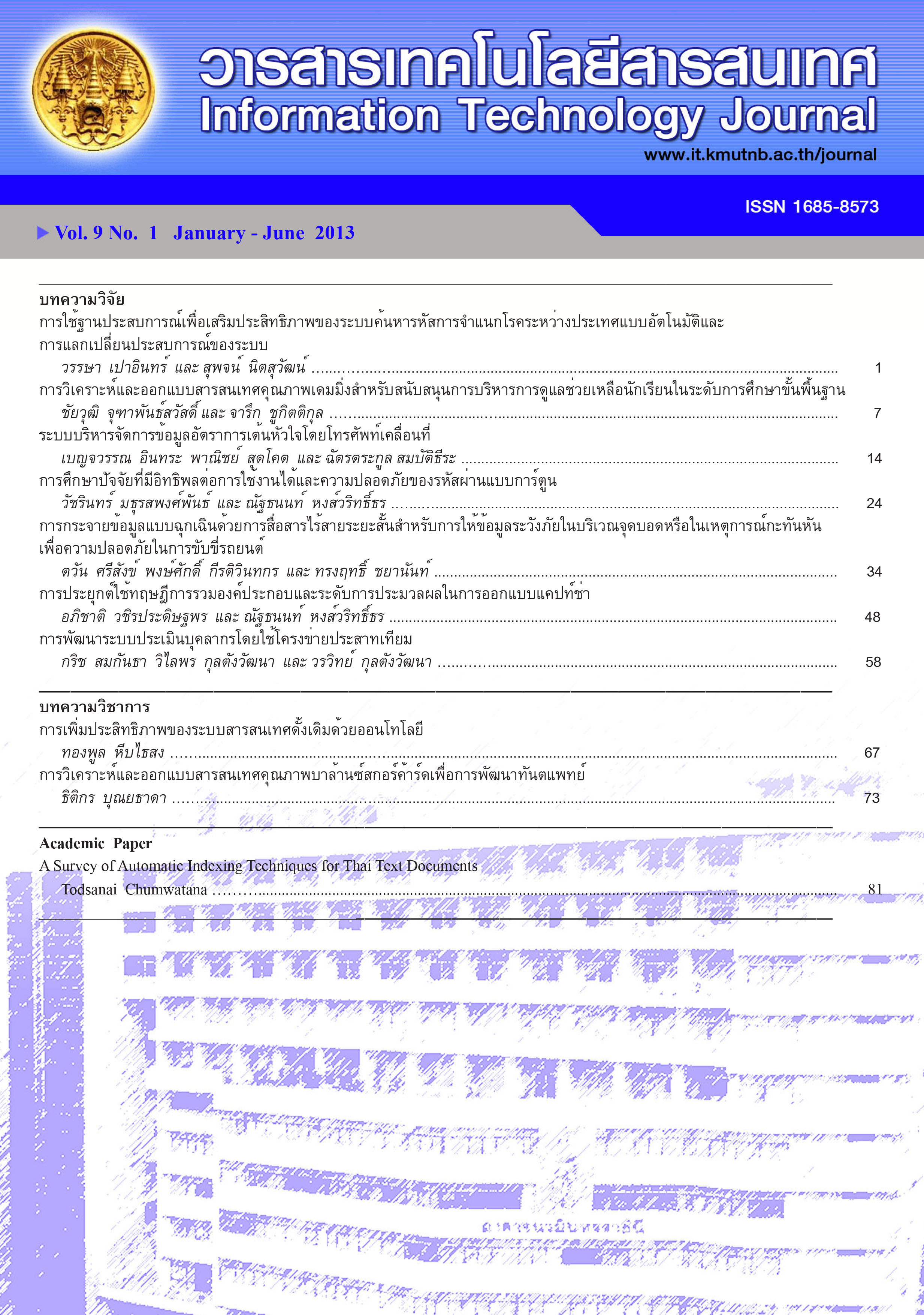การปรับใช้ MHI กับท่าทางของมนุษย์ที่มีการเคลื่อนที่ที่ซ้ำ แนวเดิม
Main Article Content
Abstract
บทความนี้นำเสนอการปรับใช้ Motion History Image หรือ MHI จากวีดิทัศน์เพื่อแสดงบริเวณและวิถีของการ เคลื่อนที่ของท่าทางของมนุษย์ที่ซ้ำแนวเดิม ทั้งนี้แม้ว่าวิธี การสร้าง MHI นั้นง่ายและนิยมใช้อย่างแพร่หลายแต่ก็ไม่ เหมาะสำหรับข้อมูลที่มีการเคลื่อนที่ซ้ำแนวเดิม ดังนั้น ผู้วิจัย จึงเสนอวิธีแก้ปัญหาด้วยการหาเฟรมที่แสดงถึงช่วงกึ่งกลาง ของท่าทาง เพื่อแยกวีดิทัศน์ออกเป็นสองส่วนที่มีแนวการ เคลื่อนที่ของวัตถุในภาพไม่ทับซ้อนกัน จากการทดลองกับ วีดิทัศน์ที่แสดงการเตะ การผลักและการต่อยจำนวน 33 ชุด พบว่าวิธีการที่นำเสนอสามารถหาเฟรมกึ่งกลางของท่าทาง ได้ถูกต้องเฉลี่ย 67% สำหรับทั้ง 3 ท่าทาง และถูกต้องสูงสุด ถึง 91% ในท่าเตะ ทำให้สามารถใช้ MHI เพื่อสื่อถึงบริเวณ และแนวทางการเคลื่อนที่ตามลำดับก่อนหลังของ การเคลื่อนที่เหล่านี้ได้ถูกต้องชัดเจนกว่าการใช้ MHI โดยไม่ แบ่งช่วงของวีดิทัศน์ได้เป็นอย่างดี
Utilizing MHI for Human’s Gesture with Repeating-path Trajectory
Pawinee Jaroonphan and Nongluck Covavisaruch
This paper presents an approach to modify Motion History Image (MHI) to represent human’s motion with repeating-path trajectory from a video clip. Although MHI is easy to create and widely used, it does not suit motion that has repeating-path trajectory. Hence, we propose a method to identify the mid-action frame in order that the motion in each half of the video clip does not have repeating path. From our experiments with 33 video clips of human’s kicking, pushing and punching, it is found that our method can correctly identify the mid-action video frames with an average success rate of 67% for all three gestures, with the highest success rate of 91% for kicking. Therefore, with our approach, MHI can be applied to represent the motion with repeating-path trajectory in a more correct and better way than using the MHI alone.

